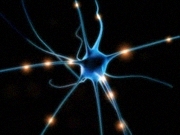Tutor HuntResources Psychology Resources
Biological Approach To Gender Development
A brief summery of the biological approach to gender development
Date : 29/12/2013
Author Information

Uploaded by : Jessica
Uploaded on : 29/12/2013
Subject : Psychology
The biological approach. Every social psychologists nightmare. Slightly reductionist in its views, the most scientifical approach in psychology laughs in the face of all social elements of development. Within the approach, the founding ideas are that of biology- chromosomes, hormones and so on. All zygotes start as gender-neutral, it is only between the six and eight week stage in which TDF (Testes Determining Factor) and other hormones which are only present on the Y chromosome, thus causing the gonads to develop into testes- It could appear as though the 'default' gender setting is female. There are many proven biological differences with physiology between males and females, for example, on average, heterosexual males tend to have enlarged BST and SDN-POA regions situated on the hypothalamus, in the prosencephalon. It is commonly thought that individual sexes have differently developed cerebral hemisphere, for example, Van Goozen et al (1995) provides good evidence for the biological approach, and that there is a correlation between hormones and gender related behaviour.
A fairly common disorder in which atypical chromosome patterns are present- XXY- is Klinefelter's syndrome. The physiological traits of this include undescended testes, penis's reduced in size, and little body hair which all point to a reduced amount of testosterone being produced, alongside the psychological traits(used in Bemms sex inventory) which are lacked for masculinity. Some increase to the breasts may occur at puberty, alongside 'rounding' of "body contours" which suggests an over production of Oestrogens- this is to be expected due to two X chromosomes. Roughly one in five hundred births are diagnosed with Klinefelter's syndrome, and the given sex identity Is male. Another less frequent occurrence is that of Turner's syndrome, with the statistics averaging 1 in 2000 births. The Sex identity is female, however the atypical chromosome arrangement of XO is present, leading to no ovaries; thus people with Turners syndrome do not menstruate, and are infertile. Breasts usually do not develop and a masculine body build is frequently apparent. Like the majority of females with the chromosome arrangement XX, females with the arrangement XO have increased verbal skills however people with the XO arrangement appear to have underdeveloped skills associated with males e.g spatial and mathematical skills. Both of these syndromes -however if they cause harm or distress should be classed as disorders, for example one may have ocpd, however if it cause's no psychological distress should really be obsessive compulsive personality syndrome-provide sound evidence of the biological approach to gender, clearly demonstrating the correlation between physiological and psychological traits. Both are also good examples of a practical application of the biological approach to gender development.
One of the most evident advantages to the biological approach is that it is basically science. And most things in science are either proven or have incredibly strong evidence, just like the biological approach, greatly contrasting with other approaches such as the psychodynamic which in some aspects may be greatly to do with 'taking someone's word.' On the contrary, if gender is purely biological, then, the social learning theory would argue, how is there such a great range of inconsistent behaviours across the sexes with normal physiological traits. Similarly the approach is very, very reductionist, eliminating all external influences, unlike the cognitive approach- which may also disagree with the biological approach due to its lax nature of determinism.
This resource was uploaded by: Jessica
